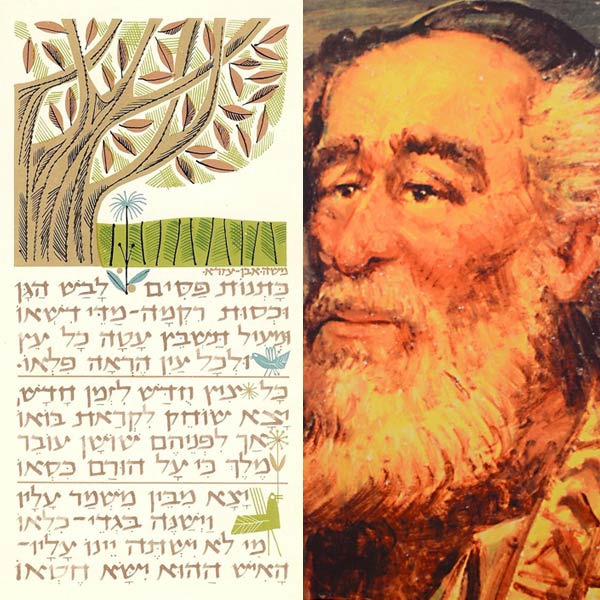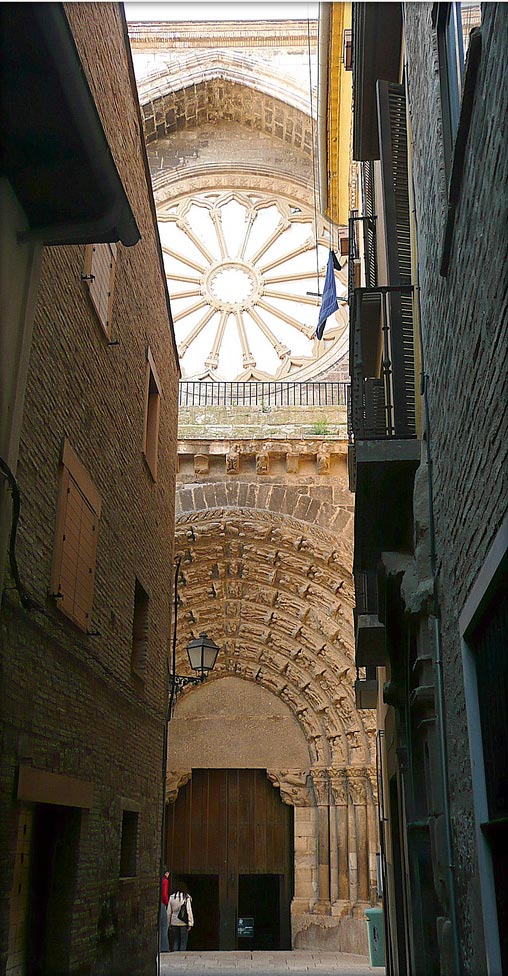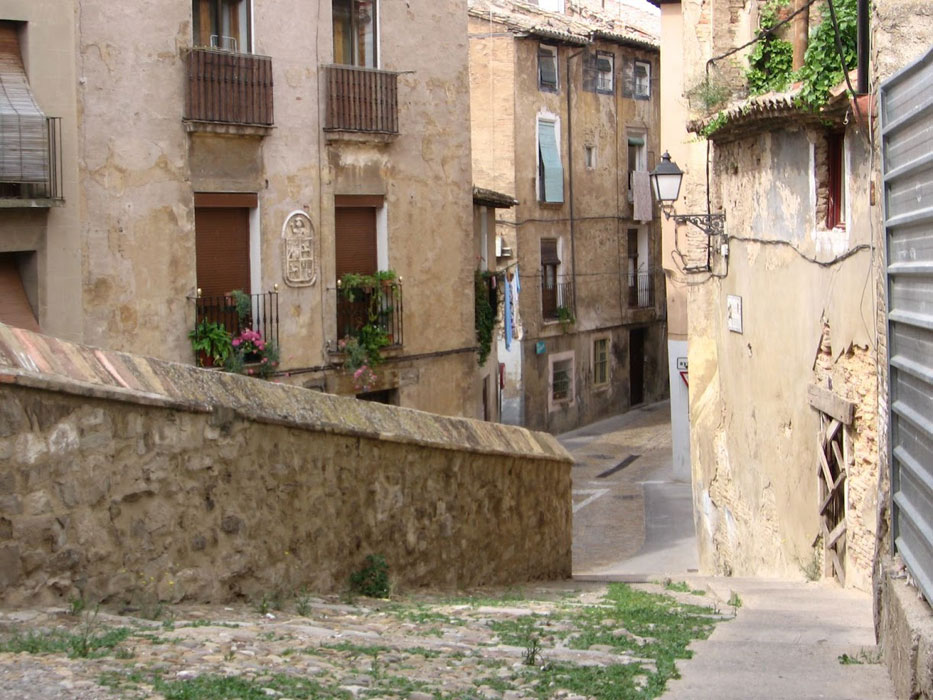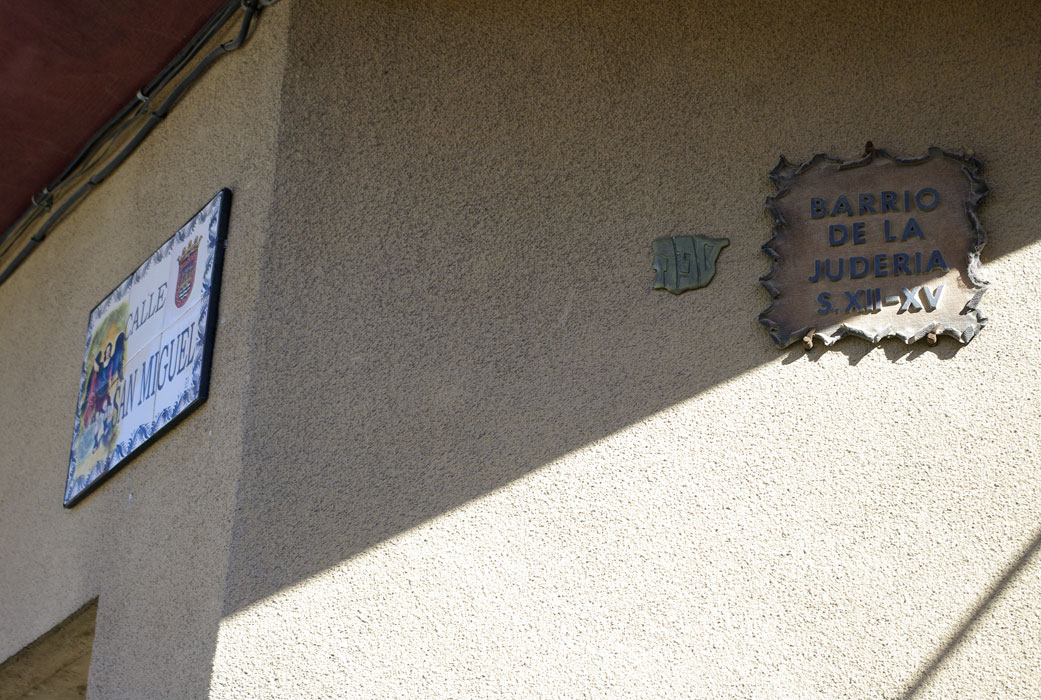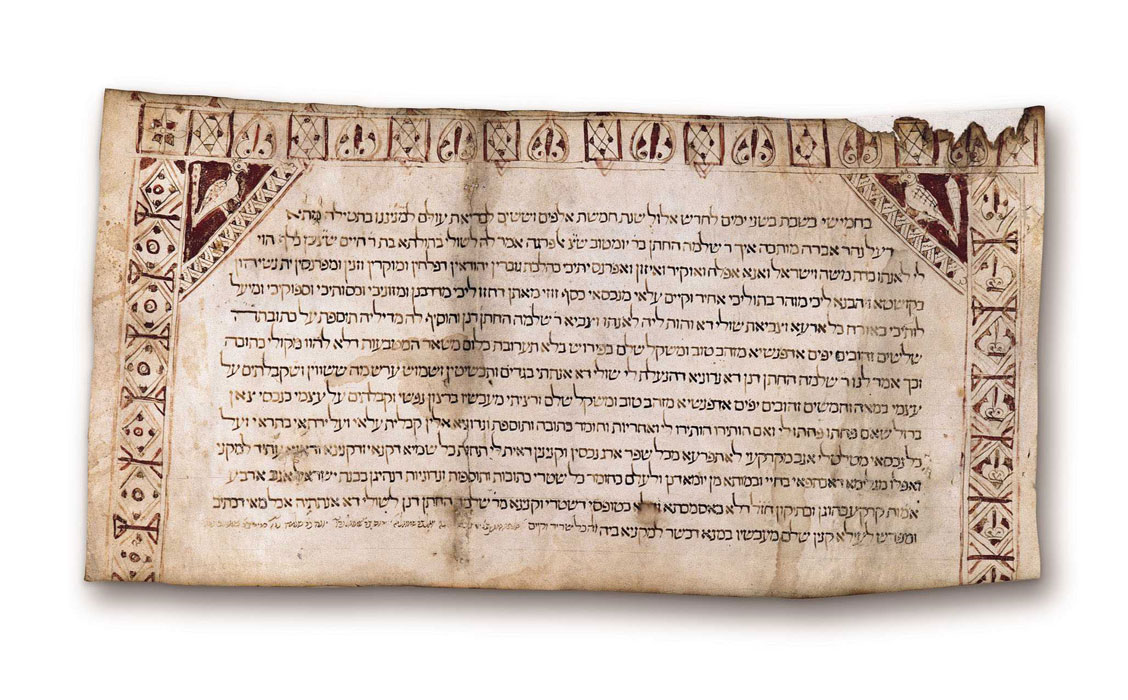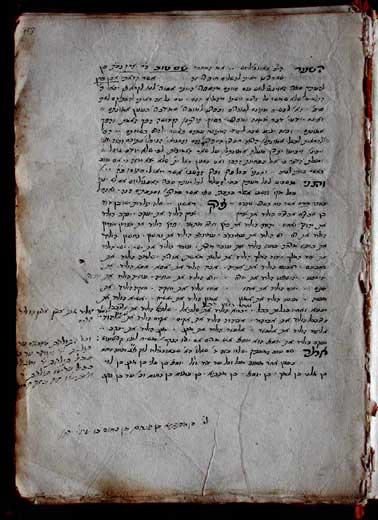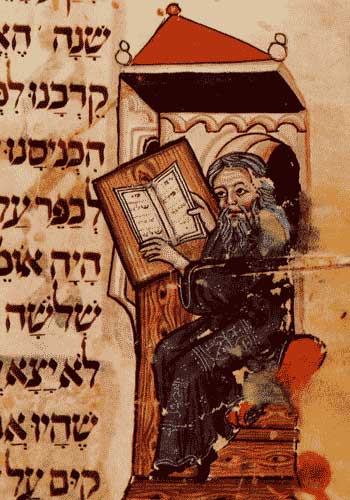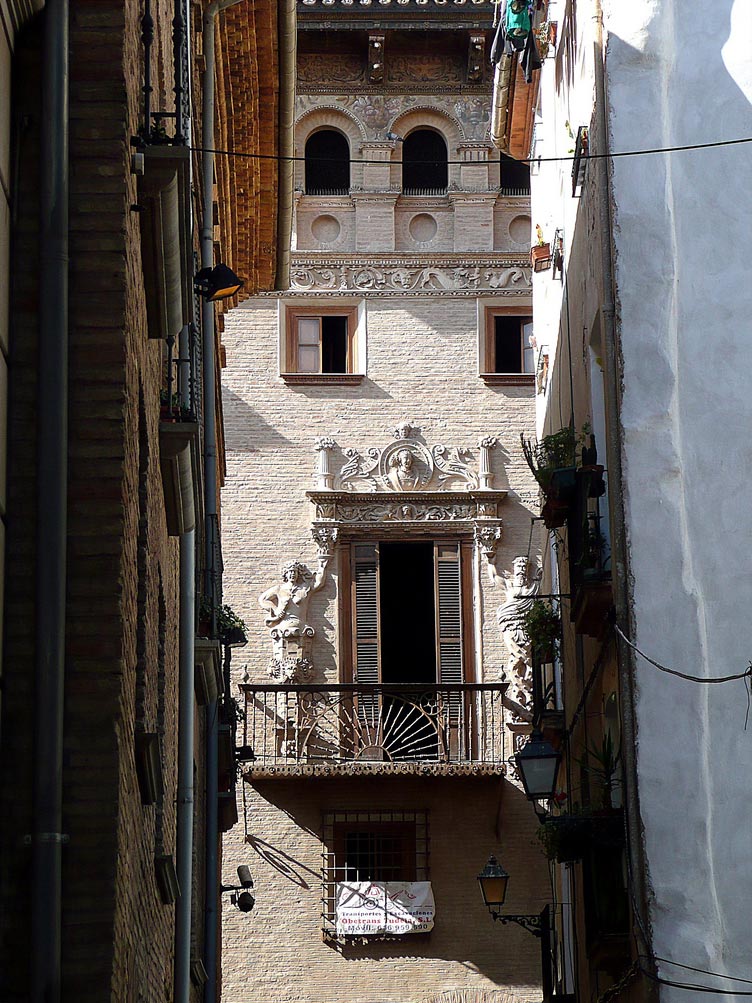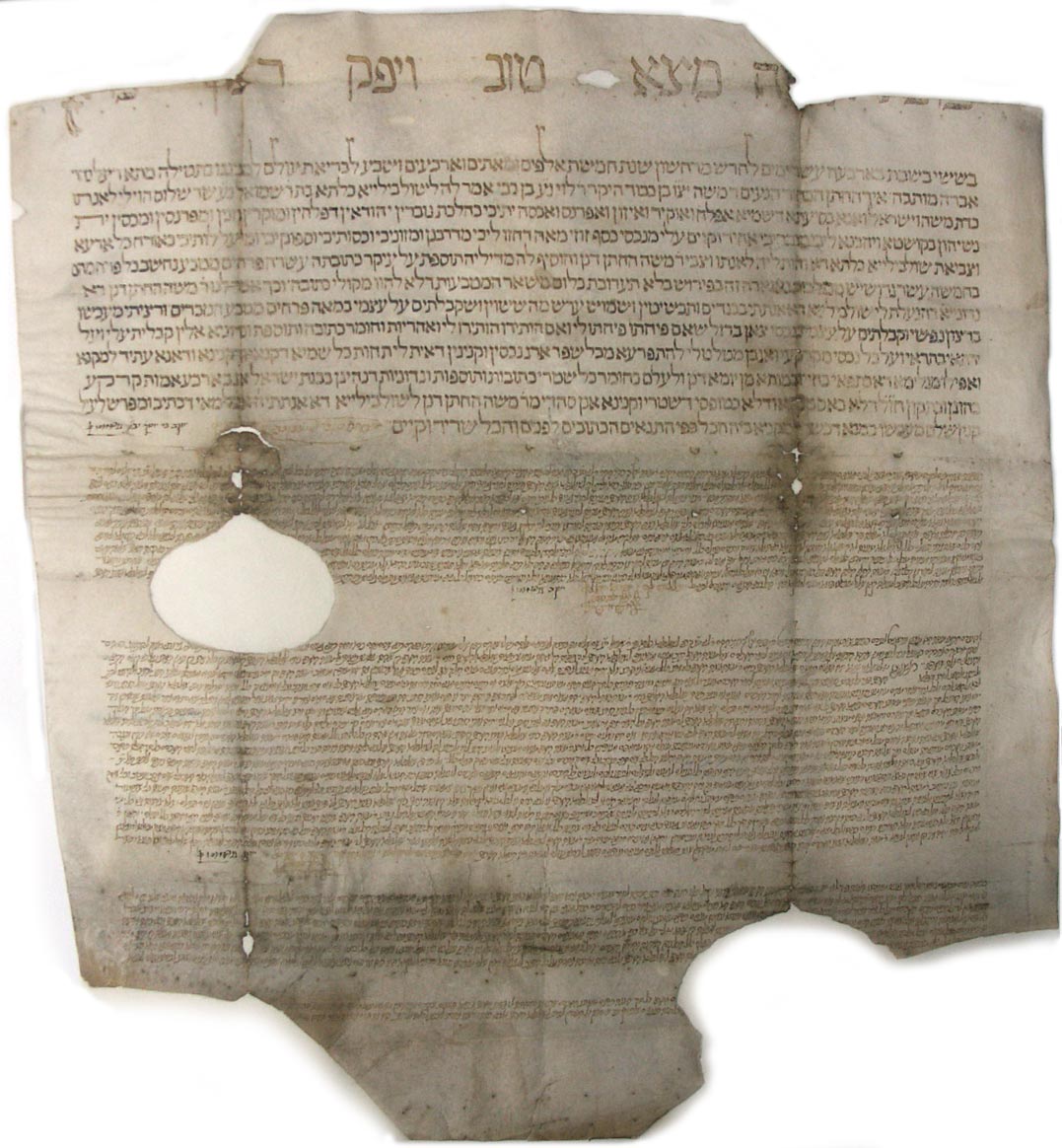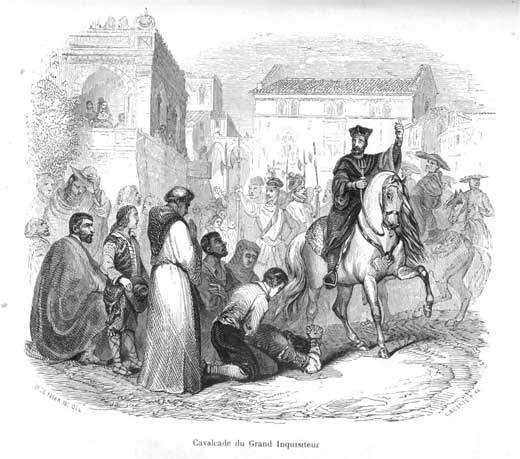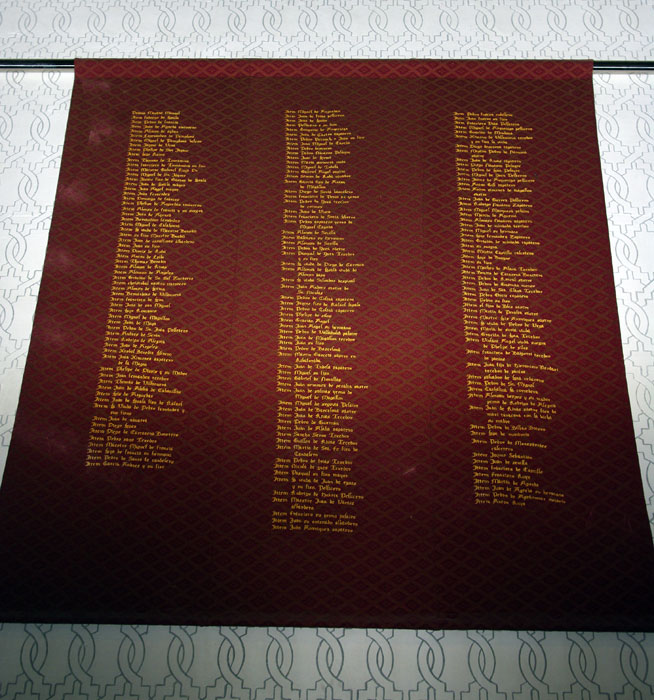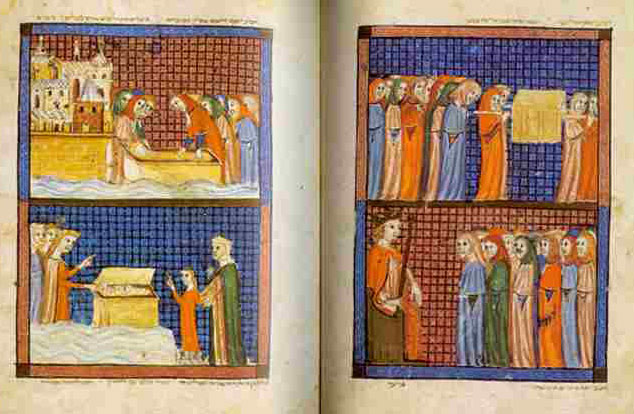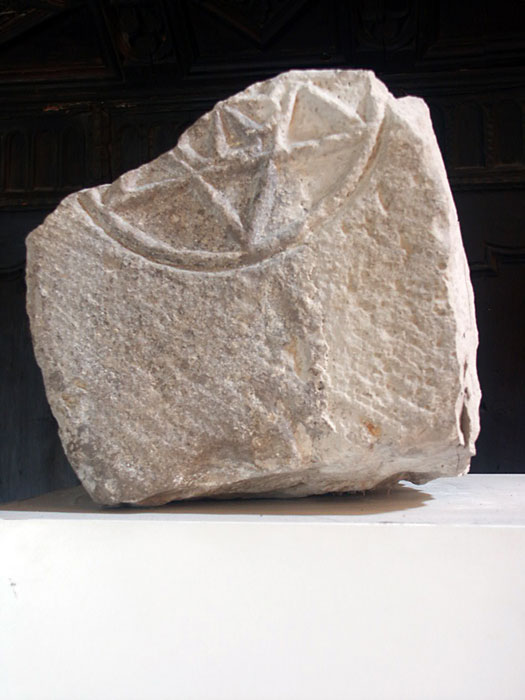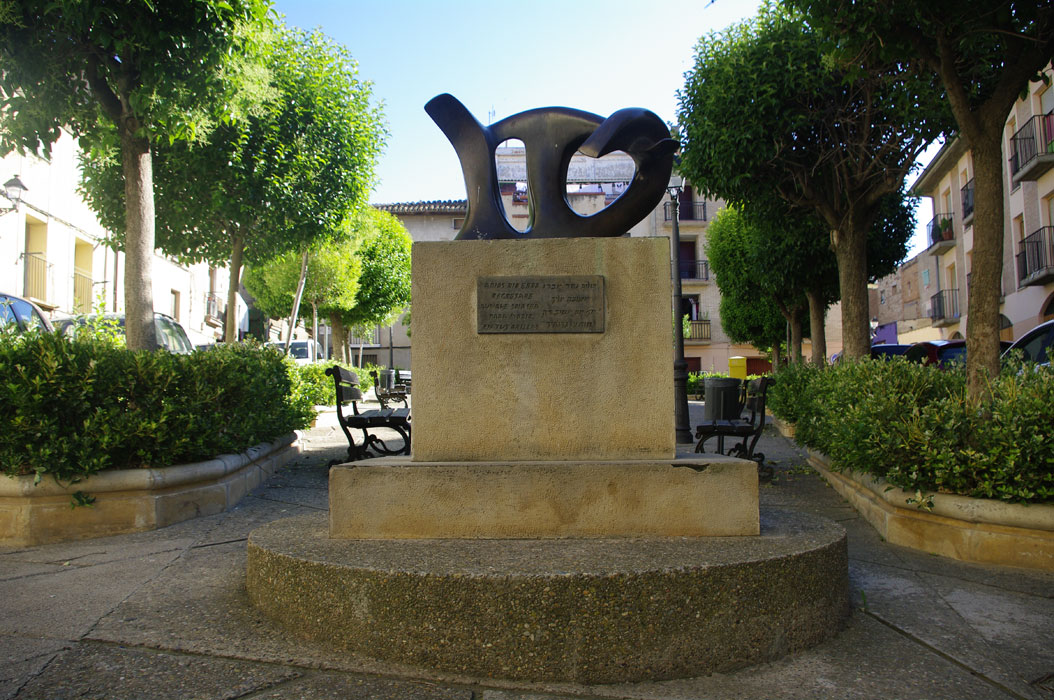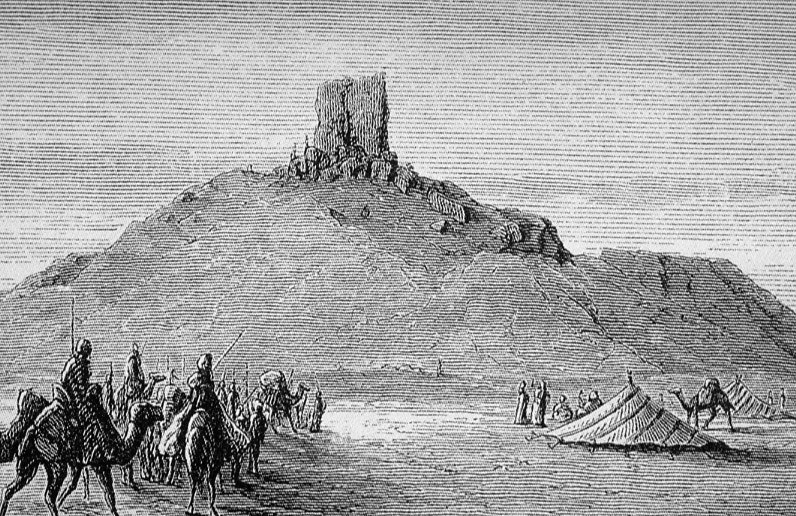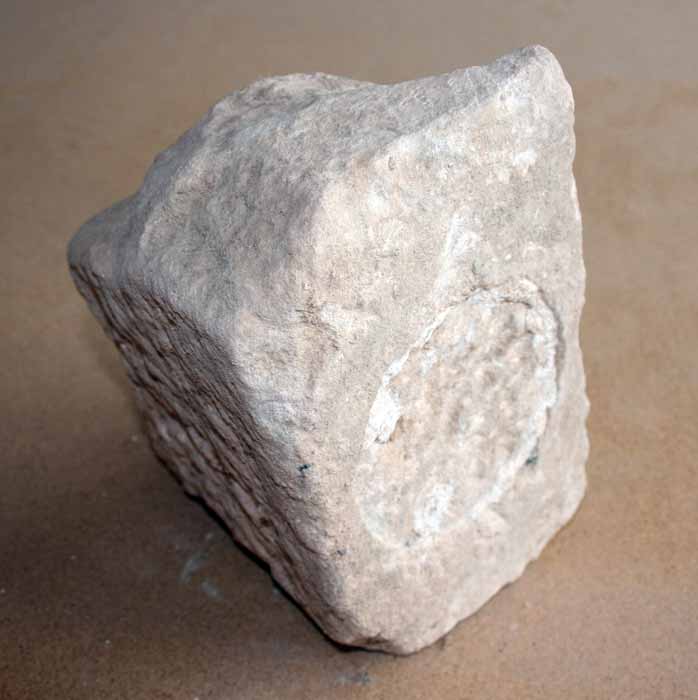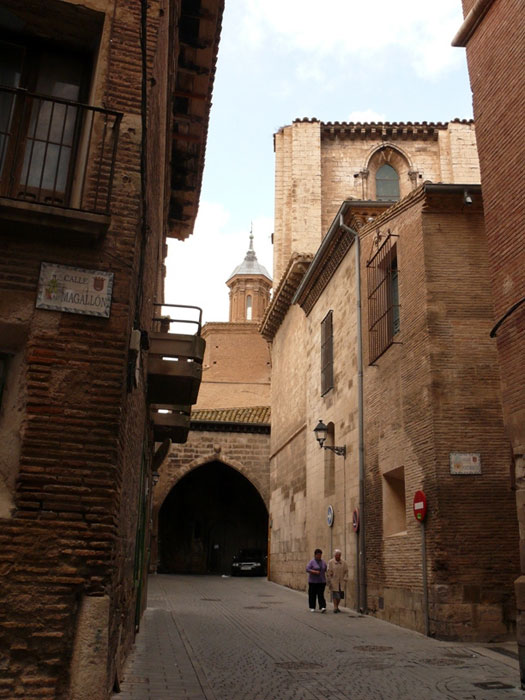
From San Jaime square neighbouring the cathedral, part of Merced street which leads to the Old Jewish quarter or Vétula Jewish quarter. The Jewish district occupied the south-eastern section of the walled site, in other words, the space falling between the plot which would later be occupied by the cathedral and the River Queiles with an exit to the south via the Zaragoza Gate. Its site would be furrowed by Rúa Mayor (main street) from which various winding alleys would depart. José Luis Lacave identified it in 1992 with the current San Julián street; and the surrounding streets would be: Verjas, Tornamiras, Horno de la Higuera, Merced, Hortelanos, Arbollones and Fuente del Obispo. Recent studies have shifted the site of the Vetula Jewish quarter to the environs of the current Juderia square in Miguel Servet, Huerto del Rey and Magallón streets.
An original building endowed with ceramic plates incorporated in its whitewashed façade, at the crossing with Tornamiras street it marks the start of the Jewish district which already existed at the time of the Moslem domination and whose limits were more clearly stipulated after the conquest of the city in 1119 by Alfonso I the Battler. The Aragonese King, who entered Tudela under an agreement, signed with the Moslems the Charter of Sobrarbe and with the Jews the Charter of Nájera, recognising its rights and properties and establishing the limits of the districts. The care and the didactic sense in naming the streets with beautiful tiling which illustrates the meaning of each name, allows the route to be followed via a sector which is notably medieval in nature, marked out by inns and restaurants and with a certain Bohemian atmosphere. On Merced street the Ezquerra Palace, dated 1690, has a magnificent coat-of-arms on its façade, finished at its base with the shell of the Way of St. James.
Recent studies situate the Vetula Jewish quarter in the environs of the current Juderia square on Miguel Servet, Huerto del Rey and Magallón streets.

